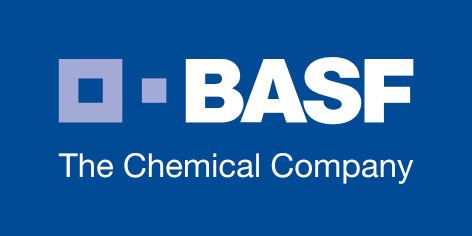Custom Catalyst Development and Commercialization Webinar …

Custom Catalyst Development
and Commercialization Webinar
View on Demand NOW!
And, bring your entire team!
Sponsored By: |
Hosted By: |
 |
 |
About this webinar:
BASF offers a review of the development and commercialization of catalyst technologies involved in creating successful custom catalyst manufacturing partnerships. This webinar offers a detailed examination of development scenarios, scale-up and manufacturing processes, catalyst and process knowledge and expertise, as well as confidentiality and Intellectual Property (IP) protection. The webinar will conclude with a live question and answer session with BASF scientists and experts.
.jpg) |
 |
What you will learn:
♦ What is a custom catalyst
♦ The 5-phase approach to custom catalyst development
♦ Finding the right development scenario to meet your specific needs
♦ How BASF handles your Intellectual Property
Who should attend:
♦ Chemists that develop catalysts
♦ Material Scientists that develop catalysts
♦ Process Engineers, especially those that scale up newly developed catalysts
Here from these experts:
 |
Dr. Jack Grosicki , Global Technology Manager – Custom Catalysts, BASF
Speaker Dr. Jack Grosicki has held a variety of R&D, manufacturing, technology and marketing roles during his 32 years working for BASF. This experience has provided Dr. Grosicki with useful insights into the key aspects of aligning BASF’s and customer’s expectations in realizing a successful custom catalyst relationship. Dr. Grosicki has a B.Sc in Chemistry from the University of Strathclyde, Scotland, an MSc. in Materials Science from Thames Polytechnic, England and a Ph.D in Catalysis from the University of Bath, England. |
|
|
Dr. Timothy Cavanaugh, Business Manager – Custom Catalysts, BASF
Speaker Dr. Timothy Cavanaugh has held positions in R&D, manufacturing, marketing, and business in his 13 years of industrial experience. Dr. Cavanaugh has a broad experience in bringing new products from the idea phase to commercialization. This knowledge has proven to be invaluable in organizing BASF’s and the customer’s expectations in order to make the custom catalyst relationship a success. Dr. Cavanaugh has a B.S in Chemical Engineering from Syracuse University, USA, a M.S. in Chemical engineering from Rensselaer Polytechnic Institute, and a Ph.D. in Chemical Engineering from Rensselaer Polytechnic Institute, USA. |
|
|
Rebekkah Marshall, Editor-in-Chief – Chemical Engineering Moderator Rebekkah Marshall is the Editor in Chief of Chemical Engineering magazine, the leading technical information resource for chemical engineers who work in the chemical process industries. Rebekkah has worked for Chemical Engineering for more than 10 years and holds a B.S.Ch.E. from the University of Kansas. Before joining Chemical Engineering‘s editorial staff more than 10 years ago, she worked for Parsons Corp. in Houston, Tex., Pasadena, Calif., and New York, handling environmental permitting and design issues for large-scale projects in the U.S. and the Middle East. |
Moderator:

Rebekkah Marshall, Editor-in-Chief – Chemical Engineering

Rebekkah Marshall, Editor-in-Chief – Chemical Engineering
What do I need to view this Webcast?
Minimum Requirements:
|
Operating System |
Processor | RAM | Internet Browser | Hardware | Media Players | Internet Connection |
| Windows 7 *1
Windows Vista Windows XP SP3 Note: Mac OS X and Linux users please click here. |
Pentium III 733mhz+ or equivalent | 512MB | Internet Explorer 6.0+ *2Firefox 3.0+
Pop-up Blocking Software Disabled *3 |
AUDIO: Sound Card with speakers
VIDEO: Monitor with 1024×768+ resolution support |
Windows Media Player 9+
Adobe Flash Player 9.1+ *4 |
High speed Cable / Fiber / DSL *5Corporate LAN *6 |
*1 Older Windows operating systems, including Windows 2000, will most likely work but are not officially supported. Please consult http://support.microsoft.com/default.aspx?pr=lifesupsps to determine if your operating system is still supported by Microsoft.
*2 For security and performance reasons it is strongly advised to upgrade to the latest version of Internet Explorer.
*3 The presentation is built on pop-upless technology; however, the presenter may choose to use pop-up windows. In these cases, pop-up blocking software must be disabled for the presentation to work correctly. In many cases, holding down the "CTRL" key while opening the Webcast URL will temporarily disable your pop-up blocking software. Please consult the documentation for your pop-up blocking software to determine the correct way to temporarily disable it.
*4 In addition to having a properly installed Adobe Flash Player your pc must permit rtmp (over port 1935) and / or rtmpt (over port 80) live streaming protocols. Please contact your local IT Administrator if you are unsure of your settings.
*5 High speed Cable / Fiber / DSL. Typical connection speeds can vary from 100Kbps – 1Mbps+. Please check with your local ISP for bandwidth allotment.
*6 Corporate LAN. Bandwith on corporate LANs can vary based on network traffic. Typical connection speeds can vary from 100Kbps – 1Mbps+. Please check with your local ISP for bandwidth allotment.
Support & Troubleshooting
What support is available for users on Macintosh and Unix/Linux-Based operating systems?
This presentation incorporates advanced multimedia features that allow elements such as slides, polling questions, surveys, and application demonstrations to be dynamically sent to the audience synchronized with the presentation. Mac and Linux audiences may view the presentation using a supported Firefox Web browser and Adobe Flash player. Please note that some presentations may not feature a Flash option.
Why can’t I hear audio?
If you have internal speakers, make sure they aren’t muted.
If you have external speakers, make sure they are powered on and aren’t muted.
Make sure you did not lose Internet connectivity.
Make sure you have the media player installed that you are attempting to use and the plugin is correctly installed within the browser.
If you are using Windows Media Player and the player simply stops and/or gives you a generic "error" message, you may be missing an audio codec required to decode the presentation audio. Click here for the Microsoft Codec Installation Package.
Alternatively, you can download the latest player here: http://www.microsoft.com/windows/windowsmedia/download/
If you are using Adobe Flash Player and are having connection issues please refer to the section labeled
What is a pop-up blocker and how do I disable it?
Pop-up blockers are software programs that stop unsolicited "pop-up" browser windows from launching automatically. These windows often feature advertisements that can be an annoyance to users trying to browse the Internet, however some features of the Webcast may make use of pop-up windows to deliver key functionality. Depending on the software progam you have installed you may be able to add the Web site URL to a list of permissible Web sites where pop-up windows are allowed.
It is common to have one or more pop-up blockers that you may be unaware of. Most pop-up blockers reside either in the system tray (lower right hand corner of your screen by the clock) or as a toolbar in Internet Explorer (at the top of your browser, go to "View" and then "Toolbars"). These can be disabled in their options or preferences menus. (Common toolbars such as Google and Yahoo Companion have built in pop up blockers).
Also, if you are unaware of any other pop-up blockers that are running on your computer, you may want to see if you have personal firewall software running, such as Norton’s Internet Security or ZoneAlarm. If you have either of these, they will also block pop-up windows.
Where can I download the latest streaming media players?
– Windows Media Player – http://www.microsoft.com/windows/windowsmedia/download/AllDownloads.aspx
– Adobe Flash (for viewing Application Demonstrations and Video Roll-ins) – http://get.adobe.com/flashplayer/
Where can I download the latest Internet browsers?
– Microsoft Internet Explorer 8 – http://www.microsoft.com/windows/internet-explorer/worldwide-sites.aspx
– Previous versions of IE – http://www.microsoft.com/windows/ie/ie6/downloads/default.mspx
– Firefox – http://www.mozilla.com/firefox/
I occasionally hear a clicking noise during the presentation. How do I turn it off?
Windows 7 – Click on the Windows Start icon, then choose "Control Panel" > "Sound," > "Sounds" tab. Scroll down the "Program" menu until you reach "Start Navigation." Set the sound to [None] and click "OK." The clicking will be disabled.
Windows Vista – Click on the Windows Start icon, then choose "Control Panel" > "Sound," > "Sounds" tab. Scroll down the "Program" menu until you reach "Start Navigation." Set the sound to [None] and click "OK." The clicking will be disabled.
Windows XP – You can disable this noise by going to the Start menu, then "Control Panel". Open "Sounds and Audio Devices," and click the "Sounds" tab. Scroll down the "Program Events" menu until you reach "Start Navigation." Set the sound to [None] and click "OK." The clicking will be disabled.
Why do I get a "connection failed" or "connection blocked" message when I try to view Adobe Flash streams?
In addition to having a properly installed Adobe Flash Player your pc must permit rtmp (over port 1935) and / or rtmpt (over port 80) live streaming protocols. Please contact your local IT Administrator if you are unsure of your settings. IT Admins can click here to review additional information on configuring proxy servers to permit live Flash streaming.
Questions?
Please contact Jennifer Brady, Marketing Coordinator, at jenniferb@tradefairgroup.com or 713-343-1906.

